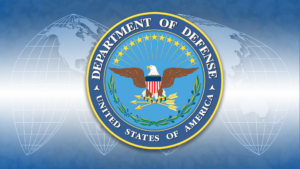Think of Parris Island and the first images that come to mind are ones of Marine Corps Recruit Training: physical fitness, weapons training, and the transformation from civilian to proud new Marine. However, Parris Island is home to other functions that, while further out of the limelight than Recruit Training, are just as important to the health of the Corps and the safety of our nation.
One of the key commands based at Parris Island is the Marine Corps Eastern Recruiting Region. This organization is divided into three districts and is responsible for recruiting new Marines across 26 states plus Puerto Rico. From Boston to Baton Rouge, all Marine recruits on the United States’ Eastern seaboard are processed through Marine Corps Eastern Recruiting Region before travelling to Parris Island and becoming part of the Corps.
Even if it is less than glamorous, it is important to recognize the accomplishments of the Recruiting Regions and the Marine Corps Recruiters that engage with prospective Marines every day. The Marine Corps recruited over 28,000 new active-duty Marines and over 4,500 new Marine Reservists in fiscal year 2022, meeting all their recruitment goals. This is especially impressive when compared to the other military services like the Army which missed its recruiting goals by 25% or the Navy which failed in its mission of recruiting reserve sailors and active and reserve officers.
In many ways, the successes of Marine Corps Eastern Recruiting Region reflect the circumstances of their home installation of Parris Island. Both are under immense challenges from nature itself: Recruiters from the difficulties of recruiting in a COVID-19 environment and Parris Island from the constant threat of climate change. Yet both have also succeeded in mitigating those challenges through the tenants of creativity and adaptation that the Marine Corps has made itself famous for. Just as Parris Island protects its land by establishing natural salt marshes and oyster beds for coastline fortification, Marine recruiters find success by continuously refining recruitment strategies and by expanding appeals to diverse neighborhoods. The latter effort garnered praise after fiscal year 2021 saw both a record high in female Marine officer accessions and over 35% of all Marine Corps officer candidates considered to have diverse background; an important quality for any military service that must forge teams from across the spectrum of American society.
It is well known that more challenges are on the way across the Marine Corps. The sea levels around Parris Island don’t appear to be receding on their own accord and the national recruiting environment is projected to increase in difficulty with a historic low propensity to enlist, decreased public confidence in the government, media cost inflation, and a growing military and civilian divide. But the Marine Corps has always found opportunity in hardship and resilience in the face of any enemy. Expect Parris Island and the Marine Recruiters who call that installation home to continue those sentiments.






